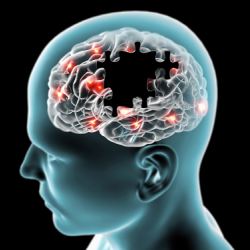Iceland is a small island in the North Atlantic Ocean with a total population of about 330,000. Its relatively small size belies what may turn out to be its great importance to the world's aging population. Because the country was essentially isolated for centuries, its people became more inbred. This means that genetically speaking, native Icelanders are more similar to each other than are members of more diverse populations, and genetic researchers can use this similarity to more easily identify rare mutations in various genes. They've done so with genes that affect the onset of Alzheimer's Disease (AD).
For example, in 2012 Icelandic researchers found a variant of a gene (APP) that protects against AD. It's rare — even in the homogeneous Icelandic population, only about 0.5 percent carry this particular mutation. The function of the gene is the production of a protein (APP) that, when broken down, forms the beta-amyloid protein that is a hallmark of the brains of people with AD. But in people who have the protective variant of the APP gene, this breakdown of the APP protein is inhibited, and their risk of developing AD is substantially diminished. The investigators wrote: "Compared with their countrymen who lack the mutation, Icelanders who carry it are more than five times more likely to reach 85 without being diagnosed with Alzheimer’s. They also live longer, with a 50% better chance of celebrating their 85th birthday."
And variants of genes with the opposite effect on AD also have been found in the Icelandic population, as we described here. A couple of mutations in genes that decrease the ability of white blood cells to destroy the self-same beta-amyloid protein have been found to be associated with a substantially increased risk of developing AD.
More recently, yet another rare mutation (in the TM2D3 gene) was identified in the Icelanders. This one also confers an increased risk and earlier onset of AD.
Thus, the homogeneity of the native Icelandic population could provide a roadmap for researchers who are trying to disentangle the etiology of AD. Finding how these mutated genes either increase or decrease the risk of AD might shed light on the development of drugs to either mimic or inhibit the effects of these variants — or how gene therapy might be applied to either multiplying or reducing the numbers of the mutated genes.

